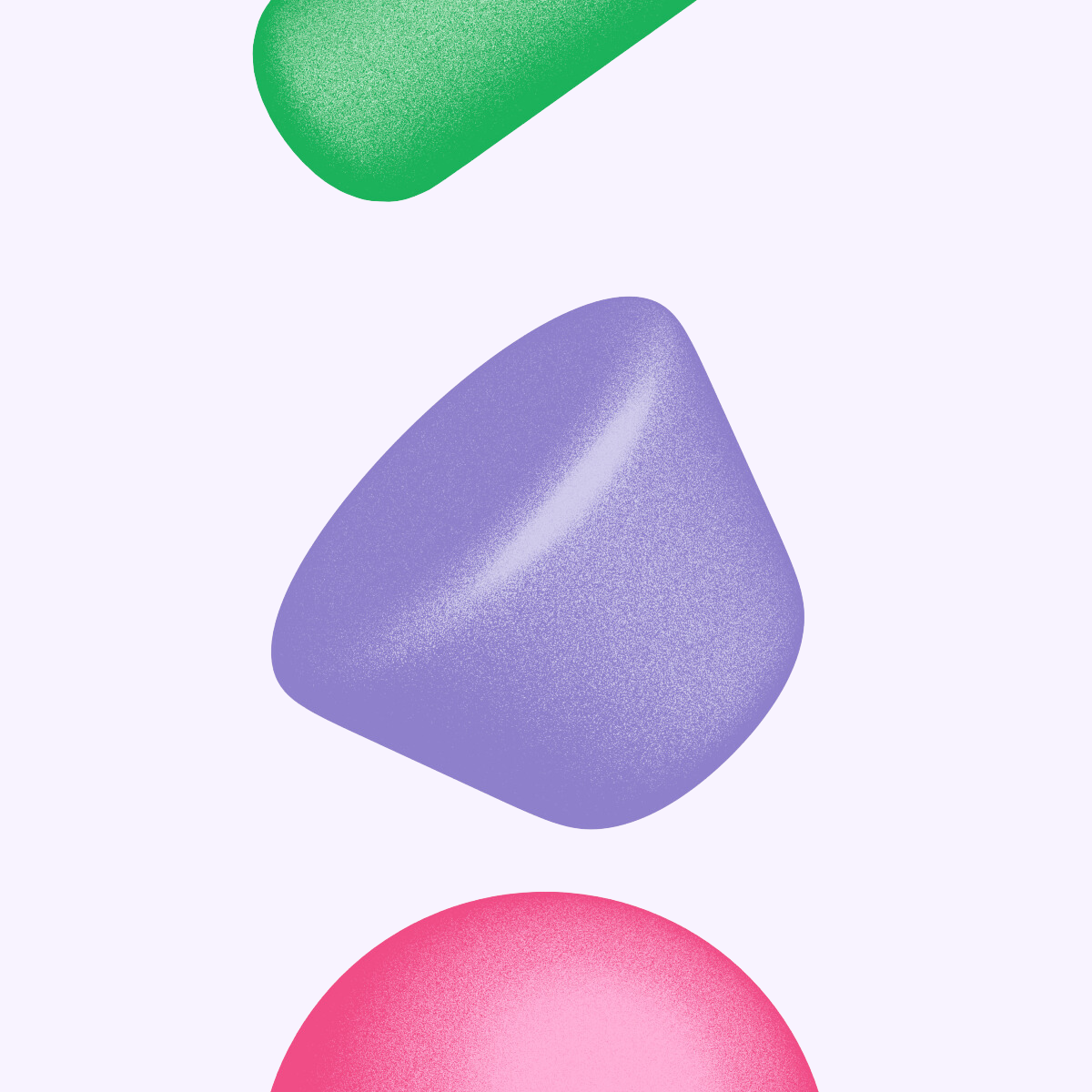Vow's Dalia Adler on how to build a best-in-class brand strategy, with data

Sometimes, brand marketers get a bad rap. To ROI-driven stakeholders, marketers might appear to be aloof creatives — but the best ones back up every creative hunch with hard data.
To follow their lead, you need a system that measures the success of your marketing efforts — then, you can use those results to inform future campaigns. In other words, you need real-time, 360-degree visibility into your brand health.
Sign up to Shorts
For fortnightly brand insights, stories and goodness that'll help you win (we promise).
Dalia Adler, opens in new tab, head of marketing at cultured meat purveyor Vow, opens in new tab (and general brand-strategy savant), walks us through what data-driven branding looks like. Having previously led brand marketing for the popular leak-proof period underwear brand Modibodi, opens in new tab and the CPG royalty that is The Kraft Heinz Company, opens in new tab, Dalia knows a thing or two about growing a brand. Below, she shares four tips for building a data-backed brand strategy.
1. Dig deep to diagnose your core audience 💭
If you want to grow a brand, you need to get personal with your target audience — AKA, your future customers.
Dalia recommends a deep dive to answer the following questions:
- Who is your current audience?
- Who is your ideal audience?
- What factors drive them to purchase your product?
The answers will help you diagnose where your messaging is resonating, where it’s still falling short, and which demographics are the most profitable to chase.
For deeper clarity, use survey data to segment your audience into groups—ideally by traits such as age, interests, and spending habits—and then examine how each group perceives your brand.
In addition to surfacing surprising insights, survey data can gut-check hunches you already have. When Dalia’s team at Modibodi hypothesized that they were falling off of Gen Z’s radar, the numbers confirmed it. While the data also showed that Modibodi resonated with older audiences, the team realized they didn’t want to lose this younger, higher-LTV segment.
So they got to work building a slew of campaigns geared at winning back 18- to 25-year-olds. One such campaign was a TikTok “period” drama series cleverly dubbed “I’m Dying Inside.”, opens in new tab Each episode depicts a different and distinctly Gen Z menstruation experience, destigmatizing a taboo topic and propping up Modiodi’s leak-proof underwear in one fell swoop. Unsurprisingly, the highly relevant campaign slayed, quickly garnering millions of views.
"Step one of any marketing strategy should always be to diagnose your core audience and really try to figure out what makes them tick. This will tell you everything — from where you’re already seeing growth to where you might need to shift perceptions and tweak your messaging."
2. Keep an eye on the competition to see how you stack up 👀
Getting out of the bubble of your own brand perception doesn’t stop with your customers. You also need to see how you’re measuring up to your competitors.
Looking at other brands will help you pinpoint where you need to up your game and what value props will help you stand out. Plus, stakeholders are more likely to greenlight a project if you can give them a reference point.
Dalia recommends using a benchmarking tool to get this data. The best ones on the market will show you exactly how your brand compares to similar brands on key metrics like awareness, consideration, and preference.
A benchmarking tool helped Modibodi verify that they were losing Gen Z because of their messaging — not due to the nature of their product. Dalia even used the data to make a more compelling case to her executive team: “When stakeholders saw other period underwear brands killing it with Zoomers, their competitive instincts kicked into gear, and it was much easier to approve and understand the potential impact of the ad spend.”

3. Build a brand health diagnostics ritual — and iterate in real time 🧪
Your brand health, like your physical health, is a living thing that requires regular upkeep and routine check-ins. That’s why Dalia suggests developing a data-backed ritual to measure the impact of every marketing effort.
“Brand building is a long game,” Dalia stresses. “And you have to stay agile in the face of constant shifts in demand patterns and consumer sentiments.”
Brands often check in on their health quarterly or biannually — and sometimes only after big, above-the-line initiatives. But Dalia recommends turning check-ins into a monthly ritual. This approach ensures that you’re always learning and that knowledge never dies with a campaign.
Modibodi used their monthly diagnostics routine to track how each marketing effort, no matter how small, was resonating with every age group. This top-level visibility gave them the confidence to keep making noise and shipping splashy campaigns at a steady cadence.
"Brand marketers get to do a lot of fun, pie-in-the-sky creative work. But that doesn’t mean we just sit on our hands and wait for ROI the rest of the time; we have to constantly measure the impact we’re making."
4. Use your data to secure organizational buy-in 🤝
If you’ve ever presented the fruits of your creative labors to a skeptical boardroom, you know how hard showing stakeholders the value of brand building can be. But winning them over is the only way to secure the resources you need to keep making the magic happen.
“At Modibodi, I sought buy-in from every single person who had any say in making and commercializing products — designers, finance teams, eCommerce teams, leadership, you name it,” Dalia says. “I wanted to make sure they all believed in what we were doing and saw how it impacted their work.”
How did she earn their trust? You guessed it — data. But not just the hard numbers: Her team took pains to present the data as beautifully and accessibly as possible.
Dalia has seen clunky, dense reports scare stakeholders away in the past — so now, she makes sure to present user-friendly, highly visual reports. When you explain your brand investments in terms everyone can understand, you convince them much faster.
After building more goodwill over time, Dalia’s team didn’t need to defend Modibodi’s ad spend. What’s more, cross-functional teams started taking the brand health insights and applying them to their own work. Product developers, for example, began planning launches with Modibodi’s Gen Z target in mind.
Carefully curated brand health data also piqued stakeholders’ interest at the celebrated sparkling water brand Aura Bora. By showing upper management compelling stats on favoritism, brand, usage, and consideration, their marketing team got the go-ahead to scale into a six-figure awareness campaign. The brand’s increased visibility since the campaign has been so convincing that the team now has the green light to invest in 10 key markets.
Validate your brand-building efforts with Tracksuit 👟
Dalia relies on Tracksuit’s bespoke brand-tracking software to close the loop on her data-backed marketing strategy. “Other platforms only tell half the story,” she says. “But Tracksuit gives you a sweeping, bird’s-eye view of your entire funnel.”
With Tracksuit, Dalia never has to wonder where to focus her brand marketing efforts — the answer is always stunningly visualized on their user-friendly dashboard.
Sound like the brand lift you need? Join Modibodi, Movember, Aura Bora, and countless other leading brands who use Tracksuit to:
- Decide *exactly* where to put their marketing dollars
- Survey thousands of people about their brand perception
- Regularly check in on their brand health via monthly data updates
- Win the support of every stakeholder
- Supercharge their growth, starting with brand-building.
"Being data-driven, commercially minded, and outcome-led makes the work better and makes you so much stronger organizationally. And Tracksuit gives you the perfect foundation to operate with that belief system every day."








